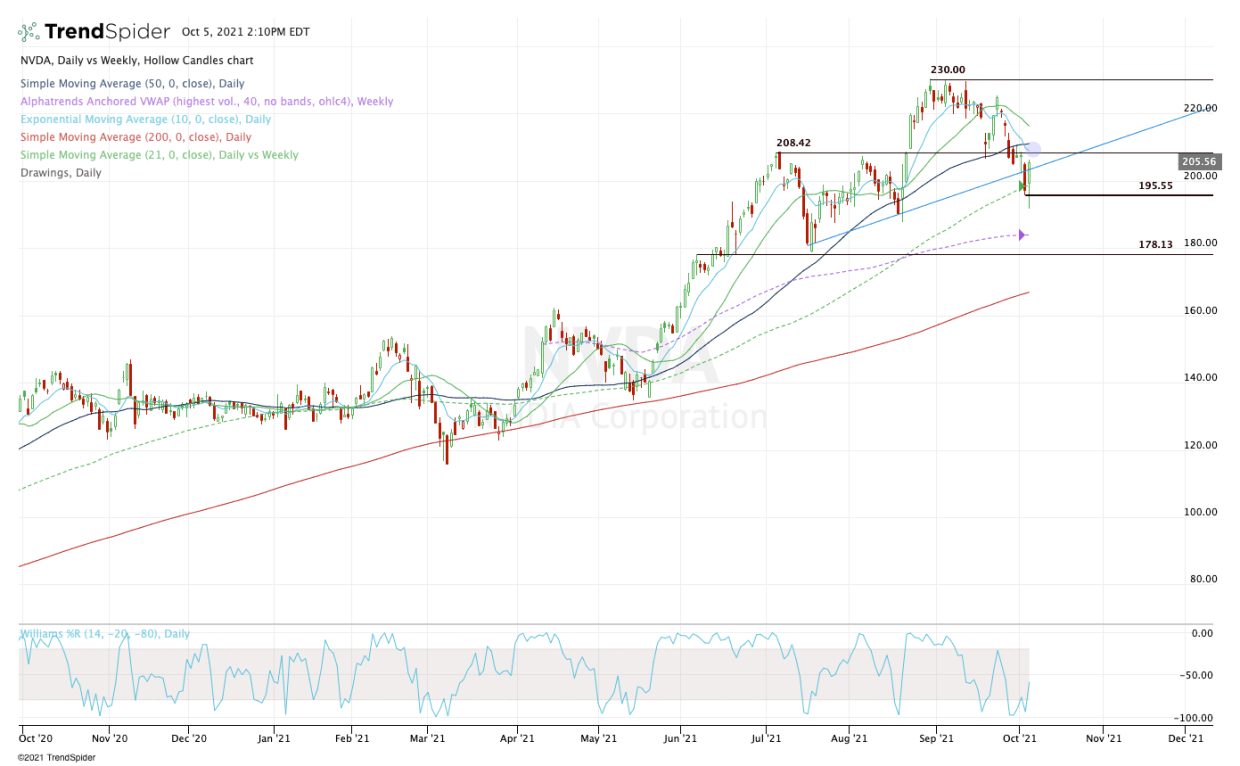Nvidia stock is down 15% from the highs. Should investors buy the dip or wait for a deeper decline? Let's look at the chart.
Nvidia is not just one of the top tech stocks to buy; it has been one of the best stocks overall.
It boasts robust long-term performance and has outpaced many of its peers this year, big and small.
Nvidia’s 57% year-to-date gains trounce Advanced Micro Devices, which is up 11.75% this year and 25% over the past 12 months.
It tops the FAANG group, although Alphabet is close, up 56% so far this year. The next-best performer in the group is up 22%.
In my view, Nvidia remains one of the best large-cap growth stocks available to investors.It also remains a top pick among analysts.
That’s even as it faces regulatory issues with its acquisition of Arm. It’s also as the shares are down about 15% from the highs. Let’s look at the chart.
Trading Nvidia Stock

Notice, on the first half of this chart, just how much consolidating Nvidia stock was doing. Despite its great earnings, impressive conferences, raised guidance and a stock split, Wall Street simply wasn’t willing to reward the stock.
Granted, it had rallied hard off the Covid lows, but the lack of a lasting reward in the form of well-deserved rally was deflating for the bulls.
That changed in late May, when Nvidia reported better-than-expected results— again.
It ignited a move from sub-$140 to the $208 to $210 area. This zone became important, as it was a major breakout level in August.
That breakout helped propel the move to $230, which became resistance, while the $208 to $210 zone was initially support on the recent dip. However, that level failed as support last week.
On the upside, bulls need to see Nvidia stock reclaim the $208 to $210 area, as well as the 10-day and 50-day moving averages. That puts the 21-day moving average in play, followed by $220, then resistance at $230.
On the downside, bulls don’t want to see Nvidia stock lose the 21-week moving average. Below it puts this week’s low in play at $195.55.
Should Nvidia close below that level, it opens the door to the weekly VWAP measure near $184, followed by the $178 to $180 zone.
I love this company, but it’s not an easy trade from here.
Failure to reclaim some of these key levels should have investors looking to buy the dip — which is a potentially larger dip should this week’s low fail to hold.
Otherwise, the shares can run if they close back over the 50-day moving average.

